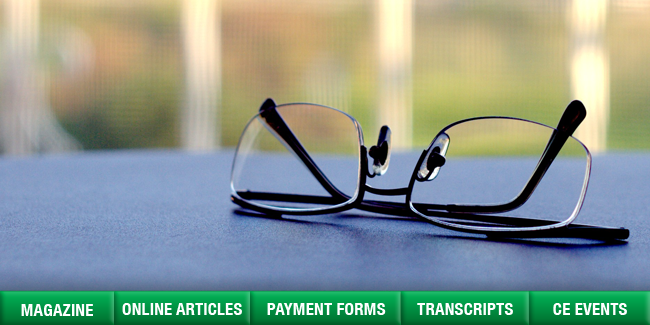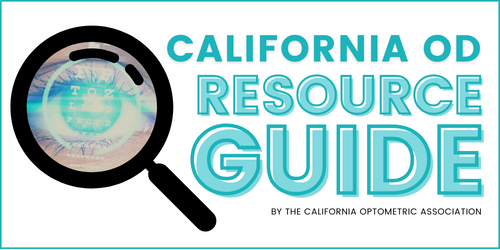What’s New with Cataract Surgery (TPA)

What’s New with Cataract Surgery? (TPA)
|
|
“We can make you better,” is a line I often use now with patients needing cataract surgery. It was not that long ago when cataract surgery was an ordeal, but today, in the hands of a good surgeon, your patient can achieve good distance and near vision without the need of glasses. The improvements are in all aspects of the surgery including the diagnostics, surgical technique, lenses used, and even the post-operative drops.
When evaluating patients with the slit lamp, optometrists are skilled at determining the change in lens density and brunescense. Over time, one develops the ability to distinguish between a 20/25 cataract and a 20/40 cataract. Unfortunately, this can be difficult to communicate to patients and occasionally there are confounding clinical findings. The AcuTarget HD™ is a new device from AcuFocus (Irvine, CA), which evaluates optical scatter. It was developed to determine if a patient is a good candidate for their Kamra Inlay for presbyopia, but clinicians are finding it also helps quantify lens density for cataract patients. Objective assessment is utilized by the AcuTarget HD™ instrument for detecting and quantifying all lens changes, even early changes, which is highly correlated with the Lens Opacities Classification System III (LOCS III).[i] It can quantify its results in a manner that patients easily understand. While this device is very new, it has great potential in determining where in the visual system is causing the decrease in vision.
Ocular coherence tomography (OCT) is an essential test in evaluating patients prior to cataract surgery. First, it can identify patients with subtle epiretinal membranes and vitreal macular traction. When these conditions are mild, they are very difficult to identify with a dilated fundus examination, but will limit the final visual acuity of the patient. In some patients, these conditions are the “majority” cause of the decrease in vision and recommending that waiting on cataract surgery is in the best interest of the patient. Finally, identifying subtle macular changes in diabetic patients prior to surgery helps the optometrist set realistic expectations for their recovery after surgery.
There are five basic steps to cataract surgery and today a laser can perform three of those five steps. Femtosecond lasers are becoming more common for cataract surgery. These lasers can open the eye with a stepped “incision,” which is less likely to have wound leak and therefore a theoretical decrease in infection. The laser makes a perfect circle for the capsulorhexis, which is free floating. The surgeon is able to grab and remove the anterior capsule without any tear making placement of the intra-ocular lens precise. Finally, the femtosecond laser is able to break up the crystalline lens. Several studies have shown there is a significant decrease in phacoemulsification energy necessary to break up the lens. [ii] When there is less phaco energy, there is less edema within the retina. This may prove to be a significant benefit for diabetic patients as they are at greatest risk of cystoid macular edema after cataract surgery.
An important feature of the femtoseond cataract lasers is their ability to make precise accurate cuts in the cornea to correct residual astigmatism. The laser controls the length, depth and radius of the incisions. This allows the surgeon to become more accurate in correcting residual corneal astigmatism. This method can correct up to 1.50 diopters of astigmatism, but most surgeons use it for less than 1.00 diopter of astigmatism and use a toric IOL when the astigmatism is greater than 1.00 diopters.
There are many options for patients regarding which lens can be put into their eye. This is an important discussion as once the new lens is in, it is not easy to take out. I often use the example of windows in a house. If you have remodeled your house you have to choose which type of window to install. There are many types of windows and all have unique features. What you do not want to do is put in new windows just to tear them out and put in different windows.
The first discussion I have is regarding how the patient wants to see in the distance. I have had many -1.50 myopes prior to surgery want to remain -1.50 myopes after surgery; wearing only glasses to drive etc. This patient can be miserable if they end up plano at distance and are always searching for their glasses to read. The next important discussion is regarding their corneal astigmatism. Today, there are toric IOLs that correct over 4.00 diopters of astigmatism. If a patient has enough corneal astigmatism to recommend a toric contact lens, you should recommend a toric IOL.
If patients want to reduce their dependence on glasses to as little as possible, there are a few options. They can either have monovision, a diffractive lens (ReStor Alcon, Tecnis, AMO) or an accommodative type lens (Crystalens, B&L). Each option has its advantages and disadvantages. If the patient has been successful with monovision contact lenses, they are very likely to be happy with this same refractive outcome. The diffractive lenses provide the most near vision, but patients will be aware of glare worse at night. The accommodative lenses provide the best distance vision, but may be limited in their near vision needing glasses for small print. It is best to be very direct on what the lenses can and cannot achieve for the patient.
During the procedure, the surgeon now can perform aberrometry to determine if the correct IOL power was chosen. The device is called WaveTech and attaches to the surgical microscope. Currently, a static reading is made and a recommendation is made regarding rotation of the toric lens and/or the power of the monofocal lens. The next generation of this device will provide “real time” data so the surgeon will not need to rotate the lens and then take another measurement. The surgeon will be provided a constant readout and can stop rotating the lens when the readout is at the target. The WaveTech device has resulted in more precise outcomes for patients, especially patients who have had previous refractive surgery because the IOL calculations are far less accurate in these patients. [iii]
A new innovation in cataract surgery is “dropless” surgery. Surgeons are beginning to inject a bolus of Trimoxi into the posterior chamber after implantation of the IOL, which eliminates the need for post operative drops after surgery. Trimoxi is a compounded, preservative-free triamcinolone acetonide and moxifloxacin delivered 15 mg/1mg/ml, with 0.2 ml. As with any procedure, compliance with drops is always a concern. We have found patients are less compliant when second eyes are treated and older patients have more trouble with drops. In a retrospective review of 2,300 charts of patients treated with Trimoxi, Dr. M. Stewart Galloway, MD, Cumberland Eye Care, Crossville, TN did not have any cases of endophthalmitis.[iv]
There has never been a better time for patients to have cataract surgery. The technology available today lets patients not only eliminate their cloudy lens safely, but they can achieve high quality vision. It is important that their optometrist informs them about their options and guides them to the treatment that will provide them with the desired outcome.
[i] Artal P, Benito A, Pe´rez GM, Alco´n E, De Casas A´ , et al. (2011) An Objective Scatter Index Based on Double-Pass Retinal Images of a Point Source to Classify Cataracts. PLoS ONE 6(2): e16823. doi:10.1371/journal.pone.0016823
[ii] ¹Data presented at APAO 2012. Catalys data sourced from Conrad-Hengerer I, Hengerer FH, Schultz T, Dick HB. JCRS. 2012.
[iii] Frings A1, Katz T2, Steinberg J. Ocular residual astigmatism: effects of demographic and ocular parameters in myopic laser in situ keratomileusis. J Cataract Refract Surg. 2014 Feb;40(2):232-8. doi: 10.1016/j.jcrs.2013.11.015. Epub 2013 Dec 13.
[iv] Dalton M. Dropless Cataract Surgery Offers Significant Benefit. Ophthalmology Times; Jan 2015; Internet.
[1] Artal P, Benito A, Pe´rez GM, Alco´n E, De Casas A´ , et al. (2011) An Objective Scatter Index Based on Double-Pass Retinal Images of a Point Source to Classify Cataracts. PLoS ONE 6(2): e16823. doi:10.1371/journal.pone.0016823
[1] ¹Data presented at APAO 2012. Catalys data sourced from Conrad-Hengerer I, Hengerer FH, Schultz T, Dick HB. JCRS. 2012.
[1] Frings A1, Katz T2, Steinberg J. Ocular residual astigmatism: effects of demographic and ocular parameters in myopic laser in situ keratomileusis. J Cataract Refract Surg. 2014 Feb;40(2):232-8. doi: 10.1016/j.jcrs.2013.11.015. Epub 2013 Dec 13.
[1] Dalton M. Dropless Cataract Surgery Offers Significant Benefit. Ophthalmology Times; Jan 2015; Internet.
1.png)

1.png)



.png)




.png)
.png)
.png)
.jpg)
.png)

.png)
.png)
.png)
.png)
.png)

.png)

.png)
.png)
